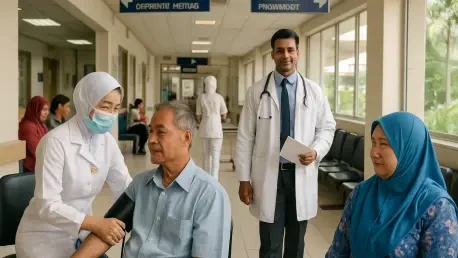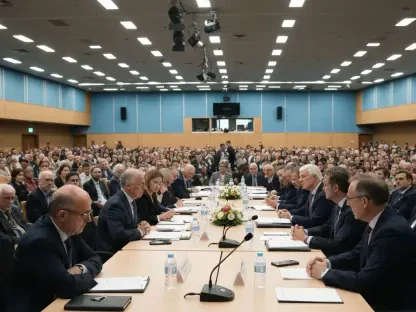In a startling revelation that underscores the fragility of Malaysia’s public healthcare system, a staggering 293 out of 542 newly posted medical officers failed to report for duty in Sarawak, a state already grappling with severe doctor shortages. This alarming statistic is not just a local administrative hiccup but a glaring symptom of a much deeper crisis plaguing the nation’s healthcare infrastructure. Sarawak, with its unique geographical and cultural challenges, has become a focal point in exposing the systemic failures of workforce management, where centralized deployment models clash with the personal and professional realities of medical professionals. Beyond mere numbers, this mass absenteeism signals a profound loss of faith in the public system, as doctors increasingly opt for better prospects abroad or in the private sector. The situation raises urgent questions about how a nation can sustain its healthcare services when over half of its assigned medical staff simply do not show up, leaving hospitals understaffed and patients underserved.
Unveiling Systemic Failures in Workforce Deployment
The core of Sarawak’s healthcare predicament lies in a centralized deployment system that treats doctors as interchangeable resources rather than individuals with unique needs and circumstances. This one-size-fits-all approach, primarily designed for urban hubs like the Klang Valley, fails miserably when applied to a region as distinct as Sarawak. Many medical officers, faced with the logistical nightmare of relocating across vast distances and adapting to unfamiliar cultural landscapes, find the proposition unfeasible without adequate support. Compounding this issue is the lack of real-time mechanisms to replace absent personnel or address large-scale no-shows. The federal government’s rigid framework offers no flexibility to account for such challenges, leaving hospitals in a perpetual state of crisis. As a result, the system not only struggles to fill positions but also fails to inspire confidence among doctors who see little incentive to endure these hardships for minimal reward or career progression.
Moreover, the unattractiveness of public service in Malaysia’s healthcare sector cannot be overstated as a driving force behind this absenteeism. Low salaries, coupled with high living costs and a glaring absence of job security, make public hospital roles far less appealing than opportunities in the private sector or overseas. Countries like Singapore, Australia, and the United Kingdom actively court Malaysian doctors with competitive pay and better working conditions, while private facilities within the country offer similar allure. This brain drain exacerbates the shortage, with Sarawak bearing a disproportionate burden due to its remote location. The state requested 650 doctors to bolster its workforce, yet remains over 1,000 short of even basic operational needs, requiring at least 2,500 more to meet acceptable doctor-to-patient ratios. Without addressing these fundamental disincentives, the cycle of no-shows and understaffing will persist, further eroding the public’s trust in healthcare services.
The Human Cost of Policy Inaction
Beyond the cold statistics, the human toll of this crisis in Sarawak paints a grim picture of overburdened medical staff and underserved communities. Hospitals in the state operate with skeletal crews, where remaining doctors face grueling workloads that compromise both their well-being and the quality of care provided to patients. Rural areas, already disadvantaged by limited access to medical facilities, suffer the most as the shortage leaves entire populations vulnerable to untreated illnesses and emergencies. The frustration among Sarawak’s leadership is palpable, yet anger alone cannot bridge the gap left by absent medical officers. This situation reflects a broader national issue, as regions like Sabah and Johor grapple with similar shortages, highlighting that the problem transcends local boundaries. The exodus of talent, driven by systemic neglect, underscores a critical disconnect between policy design and the realities faced by healthcare workers on the ground.
Equally concerning is the emotional and professional strain on doctors who do report for duty, only to find themselves in an environment that offers little support or recognition. The lack of guaranteed specialist training pathways, coupled with inadequate housing and relocation assistance, creates a sense of abandonment among medical professionals. For many, the decision to reject postings in Sarawak is not born out of negligence but out of necessity, as they seek environments where their skills are valued and their personal lives are not upended without compensation. The federal government’s failure to adapt its deployment strategies to regional nuances only deepens this disillusionment. Without a robust framework to address these personal and logistical challenges, the healthcare system risks losing even more talent to disillusionment, leaving patients to bear the brunt of empty wards and delayed treatments in a cycle of neglect.
Pathways to Reform and Recovery
Addressing Sarawak’s healthcare crisis demands bold, immediate reforms that prioritize both incentives and structural overhaul over outdated deployment tactics. Proposals for a 60-70% salary hike, alongside housing allowances, relocation support, and comprehensive insurance, could serve as powerful motivators for doctors to accept postings in underserved regions. Additionally, removing immigration barriers and guaranteeing specialist training pathways would signal a commitment to long-term career development, making public service a viable option once more. Both Sarawak’s leadership and the federal government must collaborate to craft policies that outshine offers from foreign countries and private entities. Only by presenting a package that surpasses current alternatives can the state hope to attract and retain the medical talent it so desperately needs to stabilize its hospitals.
Looking back, the failure to act decisively in the face of 293 no-shows left an indelible mark on Sarawak’s healthcare landscape, with overworked staff and neglected patients paying the price for systemic inertia. The path forward requires substantial investment in competitive compensation and tailored support systems to rebuild trust among medical professionals. It is imperative for policymakers to recognize that relying on patriotism alone falls short when global opportunities beckon with tangible benefits. Future efforts need to focus on creating a responsive framework that adapts to regional challenges and prioritizes retention through meaningful reforms. By learning from past oversights, there is hope to transform this crisis into an opportunity to strengthen Malaysia’s public healthcare system, ensuring that no ward remains empty and no patient is left behind due to preventable shortages.









